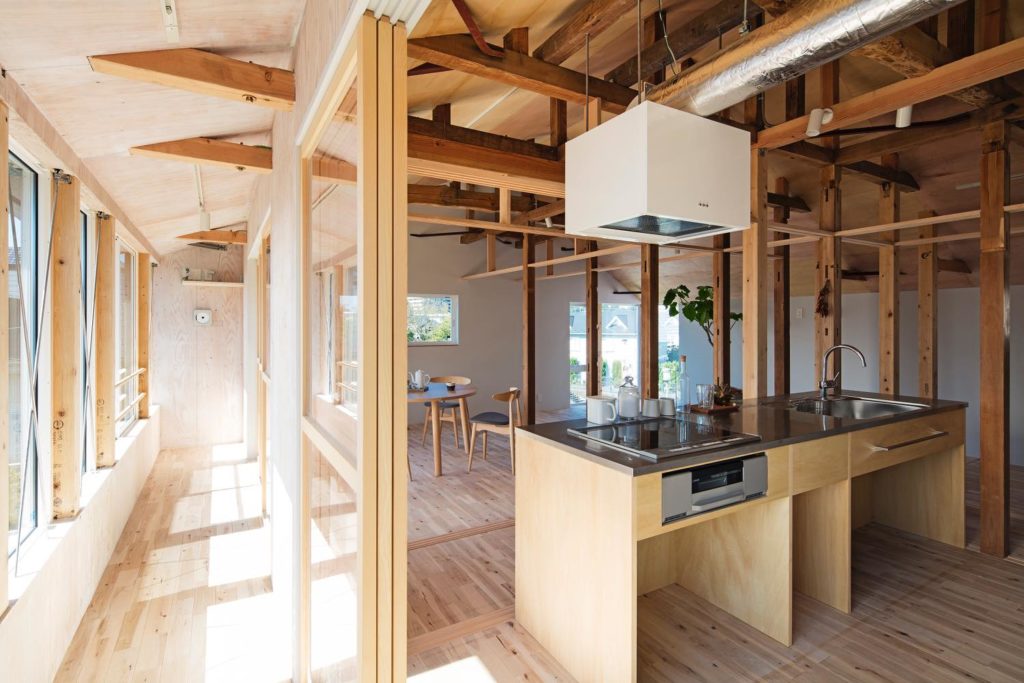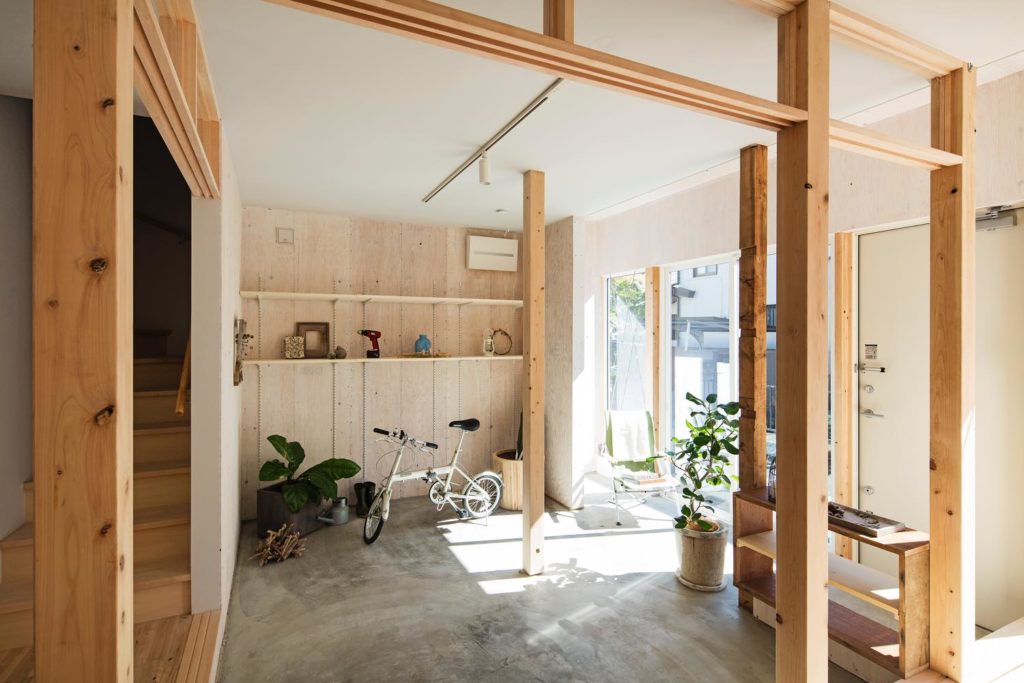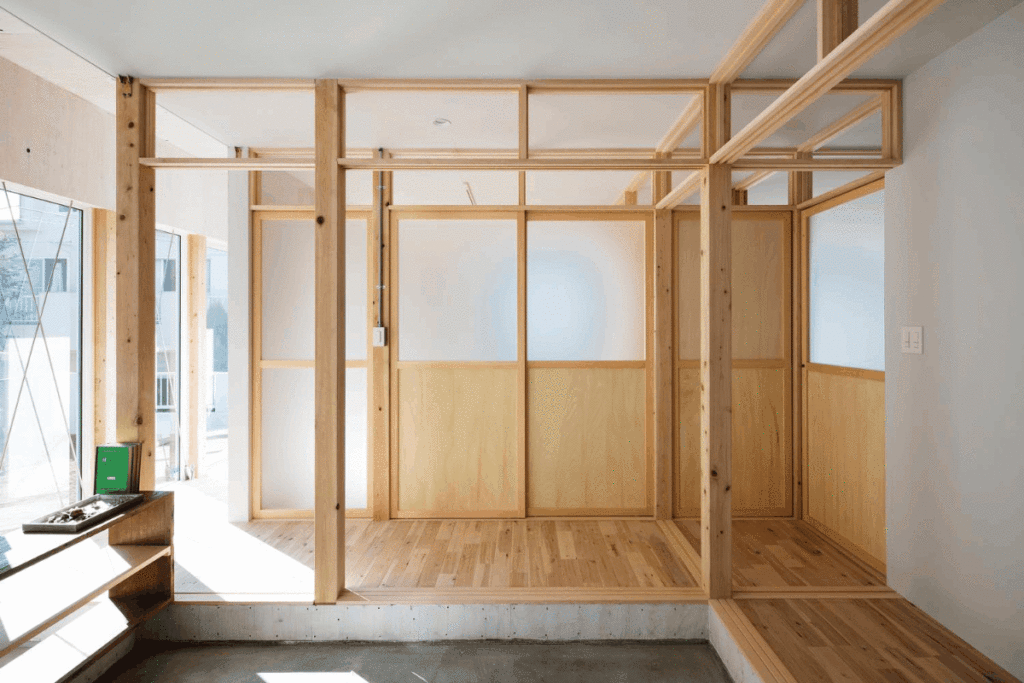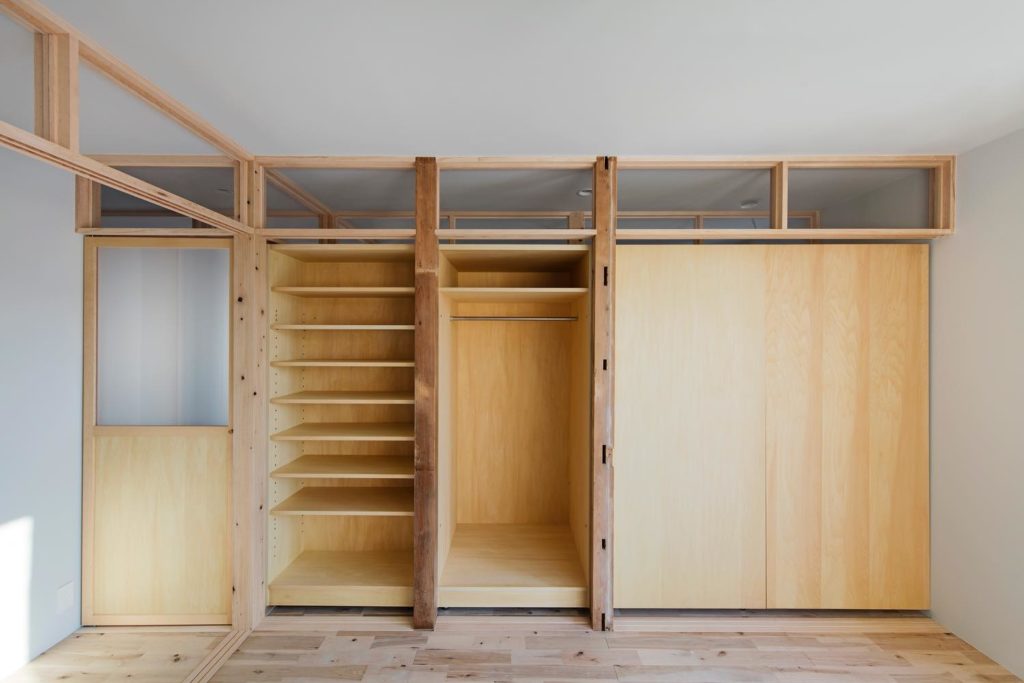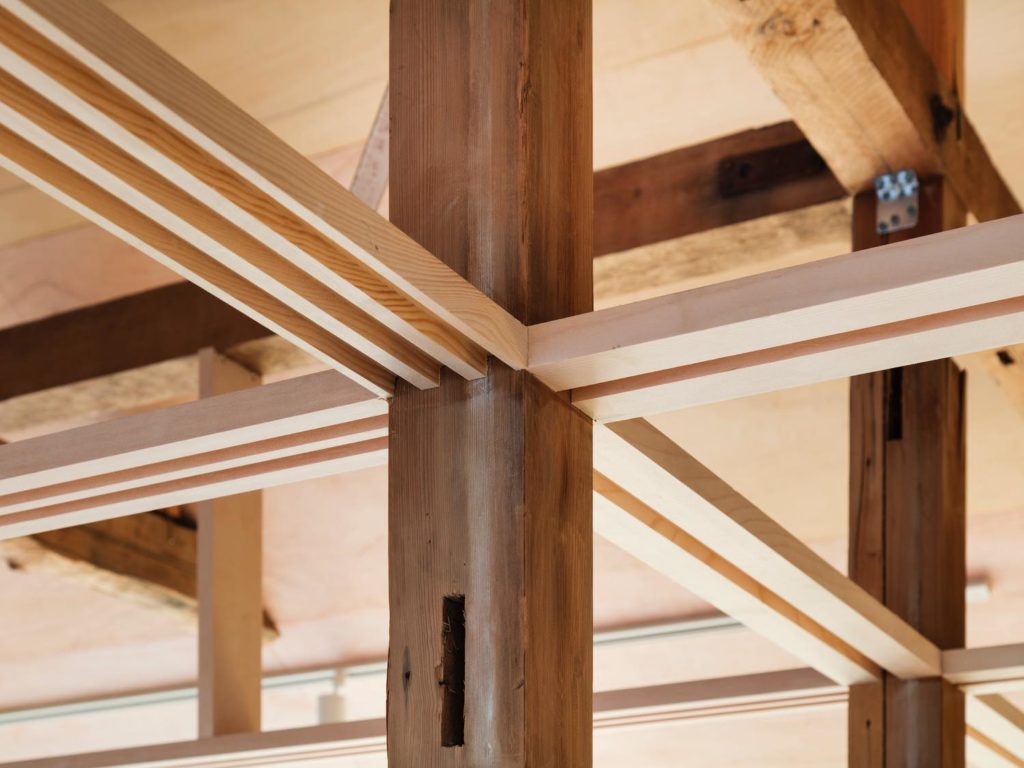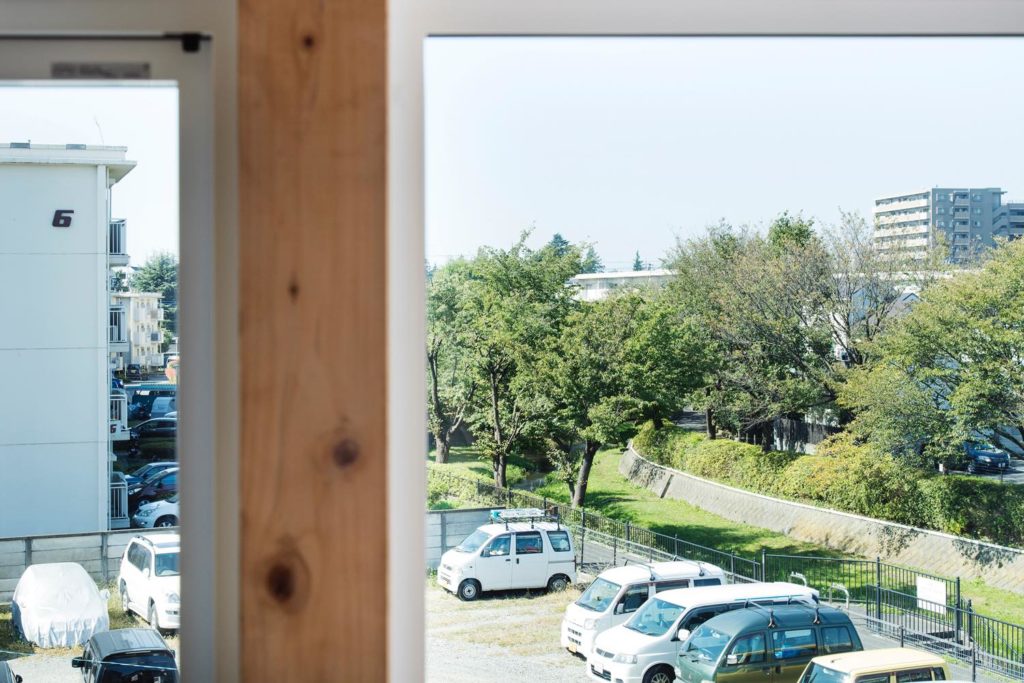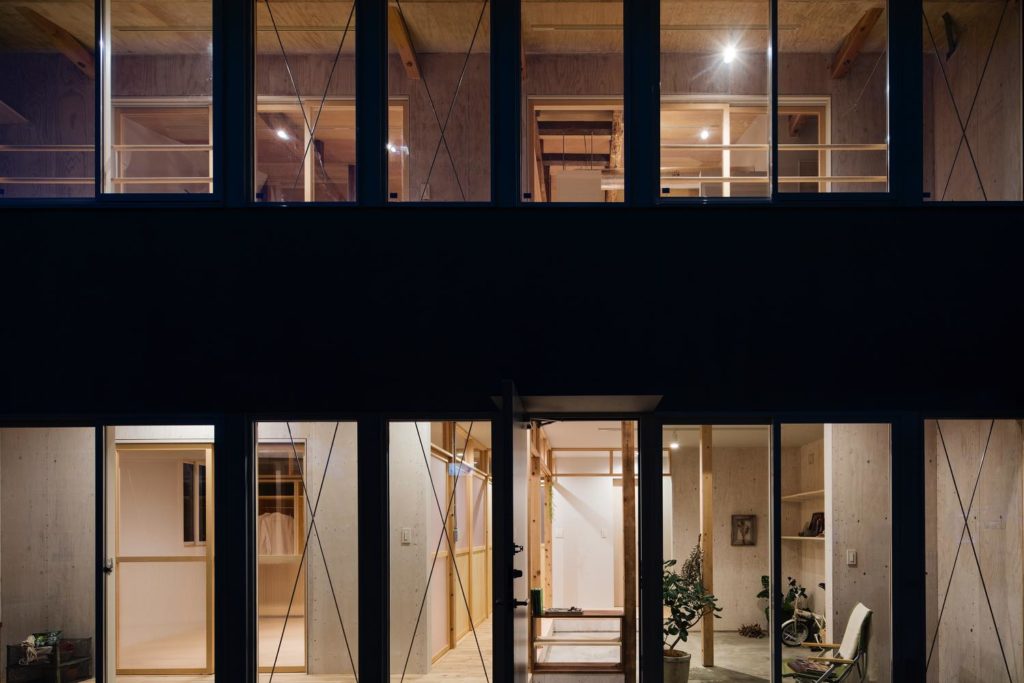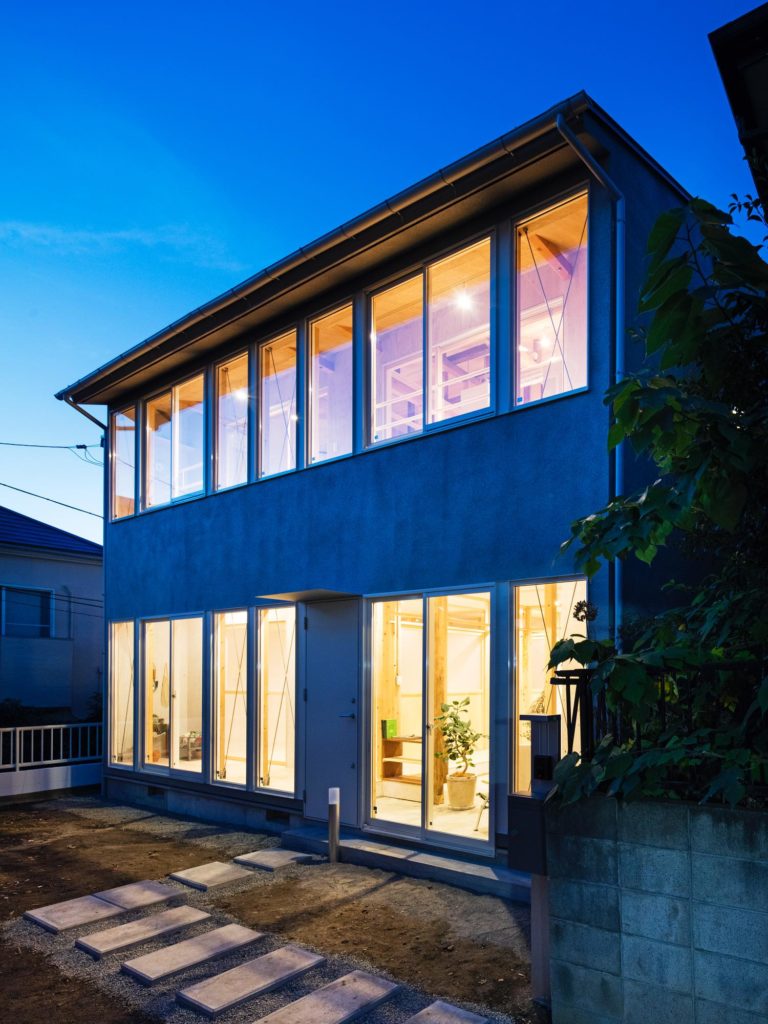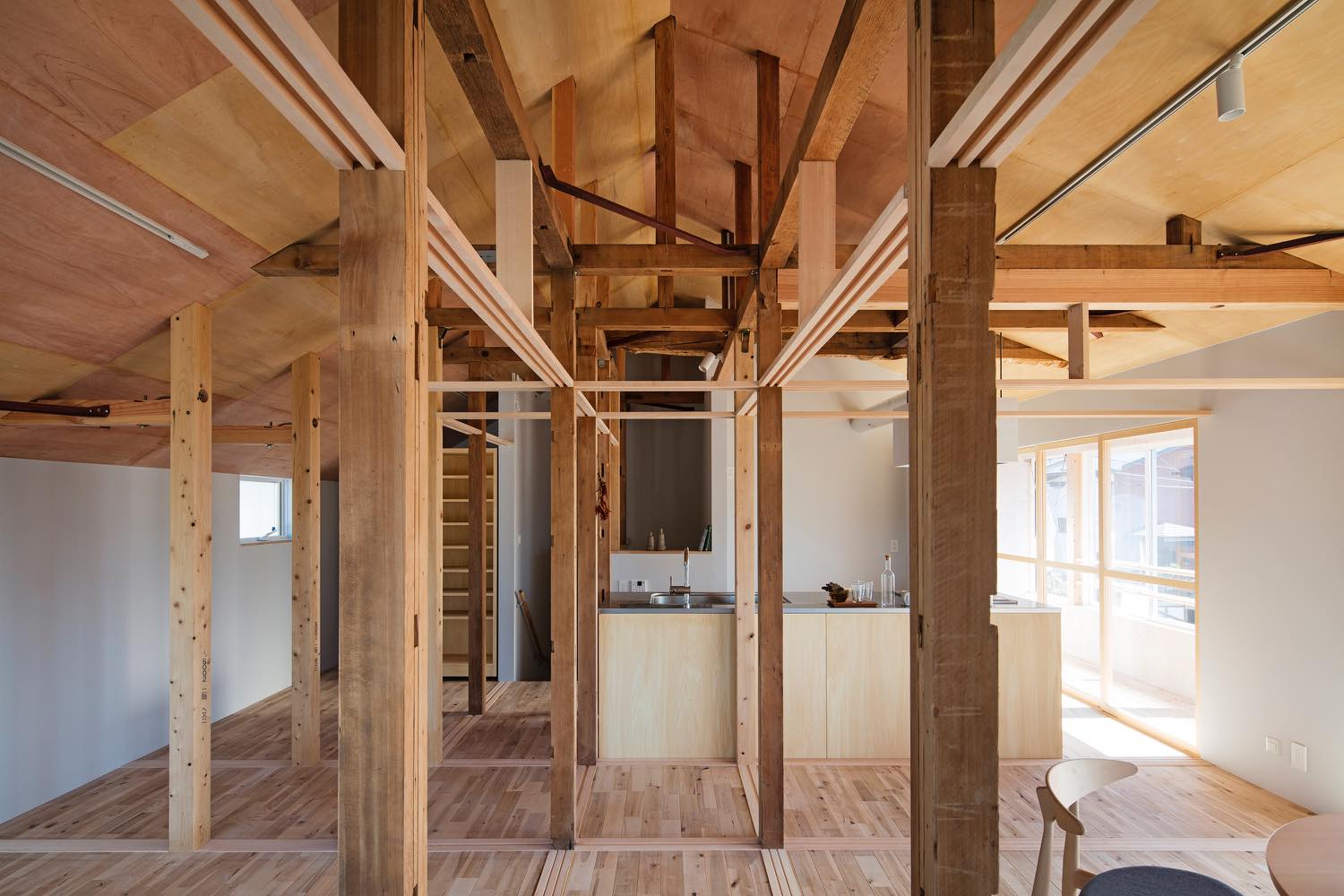
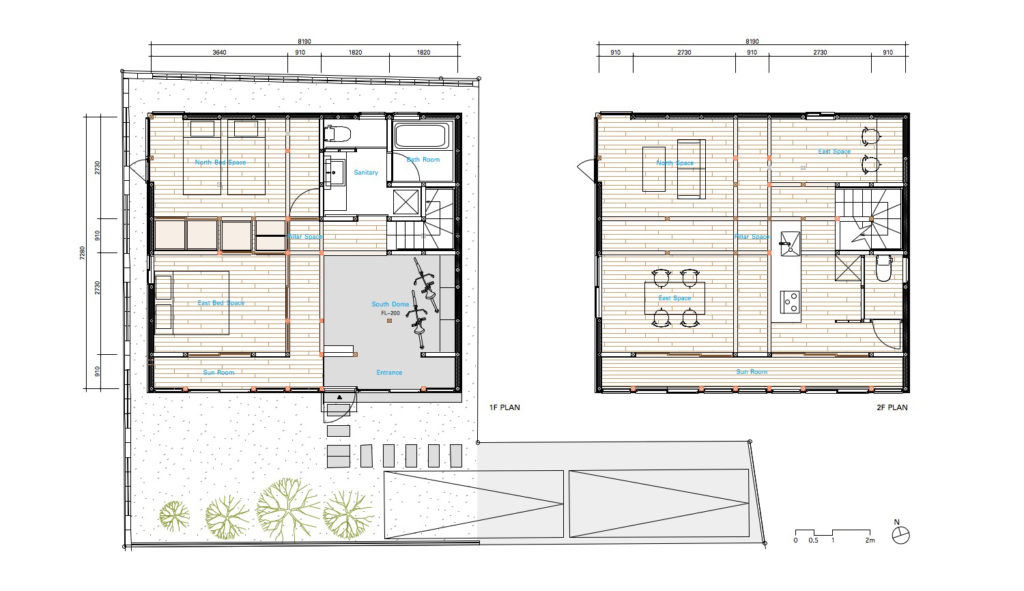
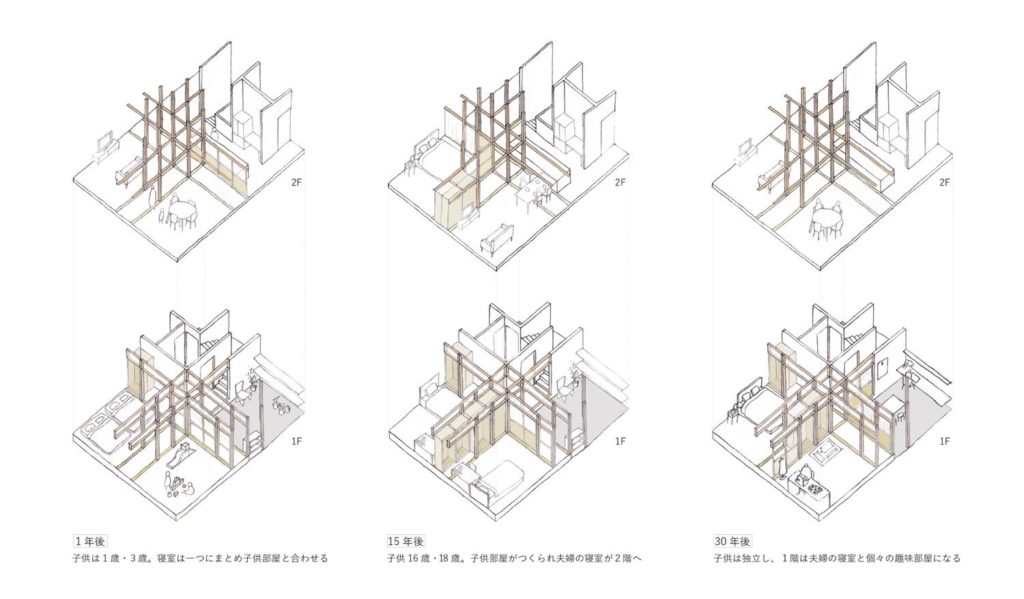
このプロジェクトは、リビタによる「HOWS Renovation」シリーズの一つである。この事業は、空き家を社会資産と捉えリノベーションによって、改めて市場での価値を持たせることを目的とした事業である。空き家をリビタが買取り、改修した後に販売するため、施主がいない状況から設計がスタートする。そのため、3~40代の子供がいる家族を想定し、汎用的・可変的な住宅を考えた。 日本の伝統的な木造軸組工法は、柱の間隔が1間=約1820mmのモジュールで構成されている。そのため、柱間もそれに従った寸法になる。私たちは、ほとんどの柱間に建具を設置できるようにして、モジュールに合わせた建具により、施主自身が簡単に交換可能な境界を作った。そして、1,2階共に中心を縦断する「柱の間」というスペースを設けた。「柱の間」は、建具の移動によりプランを変える際の中間領域となり、より多くのパターンが生まれる。また、可動家具もモジュールに合わせて設計し、建具と共に設える要素となっている。 これは日本の伝統的な木造工法の規格と建具により、ライフスタイルや家族構成の変化に合わせて形を変える、古くて新しい住宅である。
Credit
デザイン監修|藤田健介・荒巻菜生子 / Camp Design inc.
企画・事業主 リビタ
構造|高橋建築工房
施工|英建設
Award グッドデザイン賞
Media
新建築住宅特集 2017年2月号
Casa BRUTUS 2017年6月号
Casa BRUTUS 「リノベーション大全」
MARK No.68
日経アーキテクチュア 2017年9月28日号
This project is one of the series "HOWS Renovation" of Ribita (a Japanese developer mainly focusing on renovation project). This project is a project aimed at renewing the market value by renovation taking vacant houses as social assets. In this project, Ribita purchases a vacant house, sells after repairing, so the design starts from the situation where there is no owner. For this reason, we assumed a family with children in the 3 to 40s, thinking about a versatile and variable housing. The Japanese traditional wooden framework method consists of modules with pillar spacing of 1間 (= about 1820 mm). Therefore, the distance between the pillars also follows the size. We made it possible to install fittings between most of the pillars, and with the fittings tailored to the module, the owners themselves created a boundary which was easily exchangeable. And we set up a space called 'between the pillars' which goes through the center to the 1st and 2nd floors. "Between the pillars" becomes an intermediate area when changing plans by movement of joiners, and more patterns are born. In addition, movable furniture is also designed according to the module, and it is an element to set with the fittings. This is an old new house that changes shape according to changes in lifestyle and family composition, depending on Japanese traditional wooden framework method standards and fittings.

